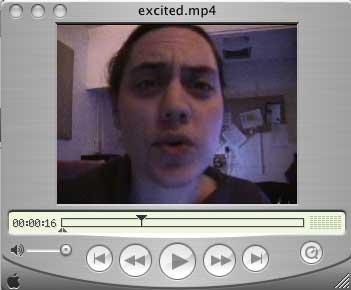For those who might be interested, this entry has been translated into Ukrainian by Aloyna Lompar http://www.fatcow.com/edu/introduction-communications-ua/">here.
Well, it is hard for me to believe that the University of Southern California semester starts back today. I think spending 20 years at MIT spoiled me. MIT has this glorious month long "Independent Activity Period", which allows faculty to both catch up on their own research and to test innovative new ideas, host public lectures, and otherwise engage in the intellectual life of the university. It was my favorite time of the academic year and I could use it this year as I have been grinding all break trying to finish up our (Sam Ford, Joshua Green, and my) new book, Spreadable Media: Creating Value and Meaning in a Networked Society. I will be saying more about the book here throughout the year, but for the moment, let me just say that our draft is so close to being done that we can taste it!
That said, I am also very excited to be teaching my first big lecture hall class since moving to USC. At MIT, my biggest class was 75, while enrollment for this class is over 200 students. I have a great team of TAs to help with the teaching. This class is one which rotates between a range of Annenberg faculty and is intended to introduce undergraduates to basic issues around technology and society. I am using new media in two senses here -- one is focused specifically on digital and mobile technologies, the wave of emerging communication tools and practices that have emerged over the past few decades and the other is focused on the process by which any emerging media technology gets absorbed into the culture. So, there is a constant movement in the class between contemporary and historical developments. For example, the first session we will watch The Honeymooners episode ("To TV or To Not TV") where the two couples go in together and buy a television set. Lynn Spigel introduced me to this episode several decades ago and it remains a staple in my teaching because it shows so many of the conflicts and tensions which surrounded the introduction of television into the home. I will then unpack it for a lecture, drawing on ideas from Raymond Williams and Nancy Baym, about the social construction of technologies. And from there, we will venture into the early history of the web. I am hoping that this constant movement between past and present will off-set a tendency to talk about new media as if they were without precedent and as if their social impacts were inescapable.
I've thought a lot going into this class about the issue of laptop use in large lecture hall classes and we've decided to make that issue an explicit part of our strategies for the class. Specifically, we are going to be deploying a Backchannel platform which we have experimented with at the Futures of Entertainment conferences back at MIT. It allows people to post questions and for the audience to vote them up or down so that one gets a rough ranking of their priority for the group as a whole. The questions will be projected onto a second screen in front of the class. This will allow me to respond on the fly to what the audience is thinking and at the same time, ideally, will keep laptop use focused on what's going on in the class. We will see what happens.
Anyway, I have made it a habit since moving to USC to post my new syllabi on this blog for anyone who might be interested. So here's the syllabus for my Intro class. You will see that I've worked hard to find the most accessible versions of certain arguments, including the use of interviews, bog posts, and journalistic writing by key thinkers on issues of media change.
For those wondering, I will also be teaching my graduate seminar on New Media Literacies this semester. This is the version of the syllabus I posted last year, which still forms the core of what I am doing this term. The key difference is that I will be involving my students in developing and teaching lessons through an afterschool program which Project New Media Literacies will be launching this semester through the Robert F. Kennedy Community Schools in Los Angeles. I will have more to say about this down the line.
Henry Jenkins
COMM 202
Introduction to Communications Technology
This course is intended as an introduction to the ways new and emerging communications technologies impact our culture. While the primary focus will be on digital and mobile technologies and practices (contemporary new media), the course will also consider a range of older media when they were new - including print culture, cinema, television, recorded sound, photography, and the telephone. The course is divided into three broad units:
- Understanding Technological Change is intended to offer broad conceptual frameworks for thinking about the relations between technology and culture.
- Reinventing... takes as its starting point the ways that the emergence of digital, networked, and mobile communications technology has impacted pre-existing media forms.
- Rethinking... examines a range of institutions and practices as they are re-imagined in response to the introduction of new communications technologies.
Taken as a whole, this class will introduce students to:
- Core issues concerning the study of communications technologies
- The process of media in transition
- The ways that new media impact existing media and institutions
- Core digital platforms (YouTube, Facebook, Wikipedia, Twitter, eBay, Flickr, Second Life, etc.) and the ways they are reshaping our everyday lives.
The course readings are intended to introduce core thinkers and debates surrounding these technological and cultural shifts. And student assignments are designed to introduce a range of research methods and conceptual models commonly deployed to examine the interface between new communications technologies and cultural practices.
Assignments:
1. Participation in online forum. Every week, students will be expected to use Blackboard's Forum to share a core question or thought that emerges from the assigned readings. These questions can be a paragraph or so and informal, but they are intended to help the instructors better understand how the students are relating to the class materials and content. Such questions are also intended as springboards for the recitation session. (20 percent)
2. Autobiographical essay. Students will draft a short (5 page) essay exploring their own relationship to new communications technologies and practices. There are many valid ways of approaching this assignment. You might describe a particular program you use regularly and how it impacts your day to day activities. You might trace your evolving relations to computers from elementary school to the present. You might describe a specific activity that is important to you and talk about the range of technologies you deploy in the pursuit of these interests. In each case, the paper is going to be evaluated based on the ways you deploy your personal experience to construct an argument about the nature of new communications technologies and practices and their impact on everyday life. The more specific you can be at pointing to uses of these technologies, the better. You do not need to make sweeping arguments about "Today's Society" but you do need to argue how they impacted specific aspects of your own experience. (10 percent)
3. Contextualizing a YouTube video. Each video on YouTube has a story. While it can be hard to trace the origins of some of these videos, each was posted by someone, for some reason. Most reflect ongoing conversations within particular subculture communities. Each may inspire comments either as written texts or response videos. And each may travel from YouTube to other communities through social networking tools. Choose a video and help us to better understand where it came from, how it relates to the existing genres of participation on YouTube, how the YouTube community responded to the video, and how it has been taken up by other online communities. Tell us that story in a five page analytic essay. The core goal of this paper is analysis and documentation, not description. You will be expected to refer to specific outside sources to support your core factual claims. You will be evaluated based on the amount of research performed, on the quality of the analysis you offer, on how you build off concepts from the readings and the lectures to help frame your analysis (including, ideally, direct references to specific readings), and on how well you understanding the nature of the new communications environment. (20 Percent)
4. Reporting on Wikipedia. Identify a Wikipedia entry that has undergone substantial revision. Review the process by which the entry was written and the debates which have surrounded its revision. Write a five-page essay discussing what you learn about the process by which Wikipedia entries are produced and vetted. How does the discussion and debate around the entry draw on the core principles of the Wikipedia community? Again, this paper is intended to combine research and analysis. You will be evaluated based on the amount of research performed, on the quality of the analysis you offer, on how you build off concepts from the readings and the lectures to help frame your analysis (including, ideally, direct references to specific readings), and on how well you understanding the nature of the new communications environment. (20 Percent)
5. Midterm and Final Exams. The exams will be open-notes, open-text. They will combine identification terms, short answer, and essay questions. The terms and essay questions will be selected from a list circulated in advance. The Midterm Exam will cover material from the first two units of the class; the final exam will cover material in the final unit. (15 Percent for each exam)
Students will be allowed to revise one of the three essays to be considered for a higher grade. The paper must be turned in at least two weeks after the original paper was returned. The grade will only be raised if the revisions substantively address one or more of the criteria for the paper's evaluation. Students who simply correct cosmetic or grammatical errors identified by the grader will not receive a higher score.
Assigned Books:
James Paul Gee and Elisabeth R. Hayes, Women and Gaming: The Sims and 21st Century Learning (New York: Palgrave MacMillan, 2010)
Remaining readings can be found on the course's Blackboard site.
Part One: Understanding Technological Change
Week 1
January 10 Overview of the Course; Thinking about Technological Change
screen: The Honeymooners, "To TV or Not To TV"
January 12 The Problem of Technological Determinism
Raymond Williams, "The Technology and The Society," Television: Technology and
Cultural Form (New York: Schoken, 1974)
Nancy Baym, "Making New Media Make Sense," Personal Connection in the Digital
Age (New York: Polity, 2010)
William Boddy, "The Amateur, the Housewife, and the Salesroom Floor: Promoting Post-War U.S. Television," New Media and the Popular Imagination (Oxford: Oxford University Press, 2004).
Week 2
January 17 NO CLASS
January 19 The Origins of Digital Culture
Steven Levy, "The Tech Model Railroad Club" and "The Homebrew Computer Club,"
Hackers: Heroes of the Computer Revolution (New York: Anchor, 1984)
Fred Turner, "The Shifting Politics of the Computational Metaphor," From
Counterculture to Cyberculture: Stewart Brand, The Whole Earth Network, and
the Rise of Digital Utopianism (Chicago: University of Chicago Press, 2006)
Week 3
January 24 The Myth of the Digital Revolution
Nicholas Negroponte, "The Post-Information Age," Being Digital (New York: Vintage,1995)
John Perry Barlow, "A Declaration of the Independence of Cyberspace," 1996
John Battelle, "The Data Base of Intentions," The Search: How Google and Its Rivals
Rewrote the Rules of Business and Transformed Our Culture (New York: Portfolio, 2006)
Chris Anderson, "The Web is Dead. Long Live the Internet," Wired, August 2010
January 26 From Mass Culture to Participatory Culture
Henry Jenkins, "Nine Propositions Towards a Cultural Theory of YouTube," Confessions of an Aca-Fan, May 28 2007.
Henry Jenkins, "What Happened Before YouTube," in Joshua Green and Jean Burgess,
YouTube: Online Video and Participatory Culture (New York: Polity, 2009)
"Andrew Keen vs. David Weinberger," The Wall Street Journal, July 18 2007.
Week 4
January 31 From Technological Utopianism to Steampunk
Howard P. Segal, "The Technological Utopians", Technological Utopianism in American Culture (Chicago: University of Chicago Press, 1985)
Bruce Sterling, "Introduction," Mirrorshades: The Cyberpunk Anthology (New York: Ace, 1988)
Sharon Steel, "Steam Dream," The Boston Phoenix, May 19, 2008.
February 2 From Pirates to Policy Makers
Debora L. Spar, "The View from Partena," Ruling the Waves: From the Compass to the Internet (New York: Mariner, 2003)
Thomas Streeter, "Blue Skies and Strange Bedfellows: The Discourse of Cable
Television," in Lynn Spigel and Michael Curtin (eds.), The Revolution Wasn't
Televised: Sixties Television and Social Conflict (London: Routledge, 1997)
Week 5
February 7 Adjusting to a New Media
Lynn Spigel, "Designing the Smart House:Posthuman Domesticity and Conscpicious Production," in Chris Berry, Soyoung Kim, and Lynn Spigel (eds.) Electronic Elsewheres: Media, Technology and the Experience of Social Space (Minneapolis: University of Minnesotta Press, 2010)
Lisa Gitelman, "New Media Users," Always Already New: Media, History and the Data of Culture (Cambridge: MIT Press, 2006)
February 9 Is Print Culture Endangered?
Sven Birkerts, "The Fate of the Book," in Sven Birkerts, Tolstoy's Dictaphone:
Technology and the Muse (Boston: Graywolfe, 1996)
Nicholas Carr, "Is Google Making Us Stupid?" The Atlantic, August 2008.
Clay Shirky, "Newspapers and Thinking the Unthinkable," Clay Shirky, March 13, 2009.
Part Two Reinventing...
Week 6
February 14 The Library
James J. O'Donnell, "From the Alexandrian Library to The Virtual Library and Beyond"
and "From the Codex Page to the Homepage," Avatars of the Word: From Papyrus to Cyberspace (Cambridge: Harvard University Press, 1998)
Scott D. N. Cook, "Technological Revolutions and the Guttenberg Myth," in Mark Stefik (ed.) Internet Dreams: Archetypes, Myths, and Metaphors (Cambridge: MIT Press, 1996).
February 16 Television
Henry Jenkins, Sam Ford, and Joshua Green, Spreadable Media: Creating Value and Meaning in a Networked Society (New York: New York University Press, forthcoming),Chapter 4.
Week 7
February 21 NO CLASS
February 23 Music
William W. Fischer, "The Promise of New Technology" and "An Alternative
Compensation System," Promises to Keep: Technology, Law and the Future of Entertainment (San Francisco: Stanford University Press, 2004)
Sam Carroll, "The Practical Politics of Step-Stealing and Textual Poaching: YouTube, Audio-visual Media and Contemporary Swing Dancers Online," Convergence, 2008, 14, 183-204.
Week 8
February 28 The Telephone
Claude S. Fischer, "Educating the Public," America Calling: A Social History of
the Telephone (Berkeley: University of California Press, 1994)
Misa Matsuda, "Discourses of Keitai in Japan," Personal, Portable, Pedestrian: Mobile Phones in Japanese Life (Cambridge: MIT Press, 2006)
March 2 Midterm Exam
Part Three: Rethinking...
Week 9
March 7 Production
Trebor Scholz and Paul Hartzog, "Towards a Critique of the Social Web," Re-Public: Reimagining Democracy
Axel Bruns, "Who Controls the Means of Produsage?," Re-Public: Reimagining
Democracy
Jeff Howe, "The Rise of Crowdsourcing," Wired, June 2006.
Brendon I. Koerner, "Geeks in Toyland," Wired, February 2006.
March 9 Consumption
Tim O'Reilly, "What is Web 2.0," O'Reilly Media, September 30, 2005.
Cory Doctorow, "The Branding of Billy Bailey," A Place So Foreign and Eight More
(San Francisco: Running Press, 2003)
Week 10
March 14 NO CLASS
March 16 NO CLASS
Week 11
March 21 Circulation
Henry Jenkins, Sam Ford, and Joshua Green, Spreadable Media:
Creating Value and Meaning in a Networked Society, (New York: New York University Press, forthcoming), Chapters 1-2, 6
March 23 Innovation
Kevin Driscoll, "The Hip Hop Approach," Stepping Your Game Up: Technical Innovation Among Young People of Color in Hip-Hop, MIT Master's thesis, 2009.
Jonathon Zitrain, "The Generative Internet," Harvard Law Review 119.7, 2006
Week 12
March 28 Privacy
danah boyd, "Making Sense of Privacy and Publicity," South by Southwest, March 13 2010.
March 30 Knowledge
Henry Jenkins, "Spoiling Survivor," Convergence Culture: Where Old and New Media Collide (New York: New York University Press, 2006)
Andrew Lih, "Community at Work (The Piranha Effect)," The Wikipedia Revolution (New York: Hyperion, 2009)
Week 13
April 4 Learning
"Hanging Out, Messing Around, and Geeking Out: A Conversation with the Digital
Youth Project," Confessions of an Aca-Fan, November 21, November 24,
November 26, 2008,
Jeffrey J. Williams, "Culture and Policy: An Interview with Mark Bauerlein," The Minnesota Review, Winter 2005.
April 6 Play
James Paul Gee and Elisabeth R. Hayes, Women and Gaming: The Sims and 21st Century Learning (New York: Palgrave MacMillan, 2010)
Week 14
April 11 Community
Julian Dibell, "A Rape in Cyberspace," The Village Voice, December 23, 1993 http://www.juliandibbell.com/articles/a-rape-in-cyberspace
danah boyd, "White Flight in Networked Publics? How Race and Class
Shaped American Teen Engagement with MySpace and Facebook." in Lisa Nakamura and Peter Chow-White, Digital Race Anthology (London: Routledge, forthcoming).
April 13 The Public Sphere
Dayna Cunningham, "Can African-Americans Find Their Voice in Cyberspace?," Confessions of an Aca-Fan, March 2009.
Malcolm Gladwell, "Small Change," The New Yorker, October 2, 2010.
Week 15
April 18 Piracy
Nancy Baym, "The New Shape of Online Community: The Example of Swedish Independent Music Fandom," First Monday, May 16, 2007.
Mizuko Ito, "Contributors Vs. Leechers: Fansubbing Ethics and a Hybrid Public
Culture," Fandom Unbound: Otaku Culture in a Connected Age (New Haven: Yale University Press, 2011)
April 20 Originality
Lawrence Lessig, "Re-Examining the Remix," TED.com.
Aram Sinnreich, "Something Borrowed, Something Blue," Mashed-Up: Music,
Technology and the Rise of Configurable Culture (Amherst: University of Massachusetts Press, 2010)
Week 16
April 25 Final Reflections: What Happens Next
April 27 Review for Final Exam
 Ryanne Hodson (RyanEdit.com, RyanIsHungry.com) co-author of the first published vlogging book, The Secrets of Videoblogging, started her career as a video editor at WGBH PBS Boston and in Boston public access television. From Bangkok to Delhi, Amsterdam to San Francisco, Ryanne has taught diverse audiences the hows and whys of videoblogging. With partner Jay Dedman, she produces RyanIsHungry.com featuring stories of individuals hacking everyday life and exchanging notes on survival.
Ryanne Hodson (RyanEdit.com, RyanIsHungry.com) co-author of the first published vlogging book, The Secrets of Videoblogging, started her career as a video editor at WGBH PBS Boston and in Boston public access television. From Bangkok to Delhi, Amsterdam to San Francisco, Ryanne has taught diverse audiences the hows and whys of videoblogging. With partner Jay Dedman, she produces RyanIsHungry.com featuring stories of individuals hacking everyday life and exchanging notes on survival.

































